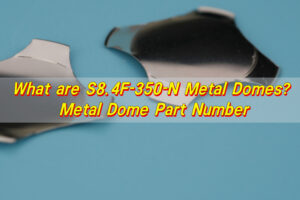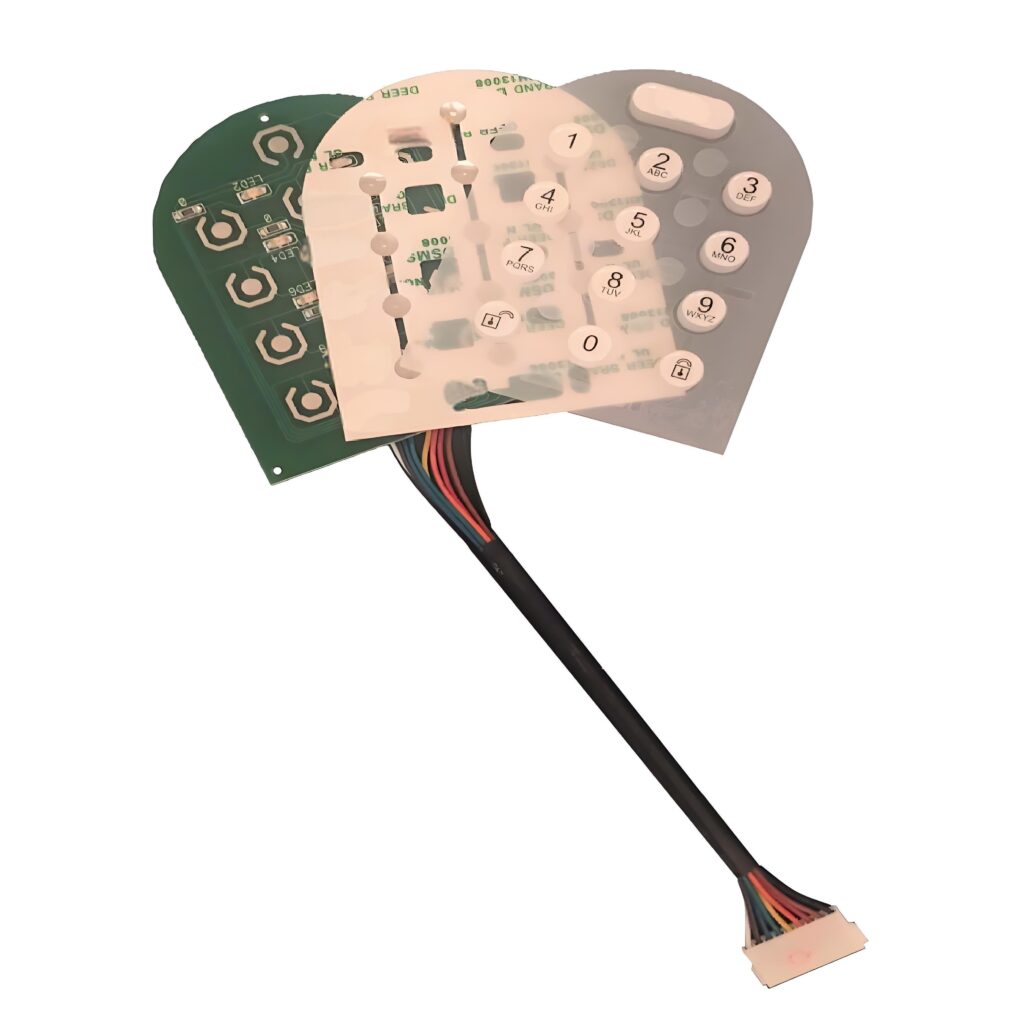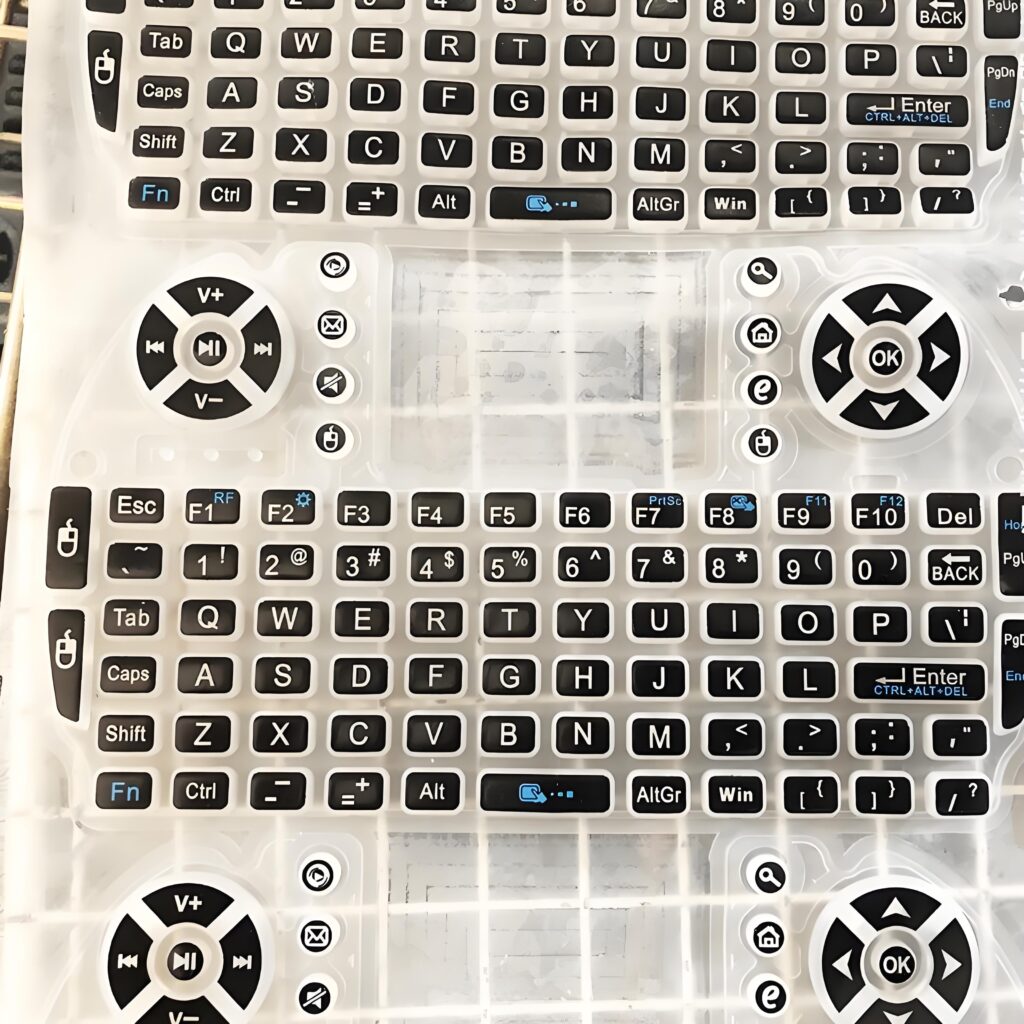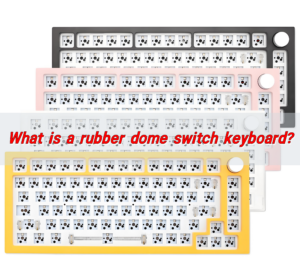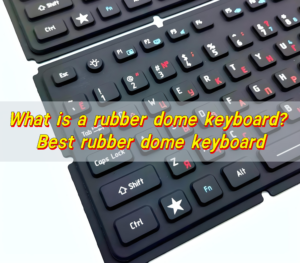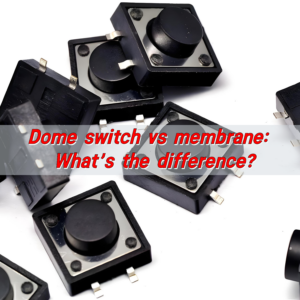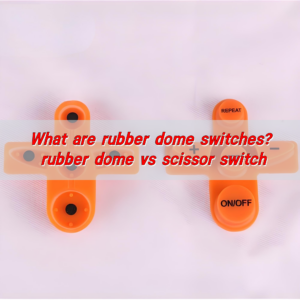Rubber dome key switch is a membrane switch whose key part is made of rubber material and the dome is usually made of metal material. This switch combines the flexibility of rubber and the conductivity of metal dome, with good tactile feedback and durability.
Rubber dome key switches are widely used in various electronic devices, such as remote controls, home appliances, and industrial control equipment.
What is a rubber dome switch?
Rubber dome switches are a specific type of key switch technology used primarily in membrane-style keyboards. Each key rests on a small rubber or silicone dome that collapses when pressed. This collapse completes the electrical circuit, sending the key signal to your device.
Unlike mechanical switches, which use individual components for each key, rubber dome keyboards use fewer parts, making them lightweight and cost-effective.
These switches are popular for their low noise level and minimal resistance. You don’t need to press too hard, and the key press is gentle on the fingers—ideal for prolonged use.
Are rubber dome switches good?
Yes, absolutely—rubber dome switches offer many benefits, especially for everyday users.
Their construction allows manufacturers to keep prices down, which means you get more for your money. And because the keys offer soft tactile feedback without a loud click.
Also, their low actuation force makes them less tiring for long typing sessions. You can type for hours without feeling the strain that sometimes comes from heavier switches. This comfort is often overlooked, but it’s a major advantage.
Are rubber dome switches membrane?
Yes, rubber dome switches are actually a type of membrane switch. To break it down, a membrane keyboard usually has three layers: the top membrane layer, the spacer, and the bottom circuit layer. The rubber dome sits above this layered circuit.
When you press a key, the dome collapses and pushes the membrane down, closing the circuit and registering the keypress.
What sets rubber dome switches apart is the tactile feedback created by the dome structure. Traditional flat membrane keyboards feel “mushy” because there’s little to no feedback.
In contrast, rubber dome switches offer a more defined, cushioned response. So while they fall under the membrane umbrella, they provide a superior typing experience compared to flat membrane keyboards.
How do dome switches work?
The working mechanism behind dome switches is beautifully simple and effective. Beneath each keycap lies a rubber or silicone dome. This dome is responsible for two things: resistance and feedback.
When you press a key, the dome compresses. This downward force pushes the membrane layer beneath it into contact with a conductive trace on the bottom layer. Once the contact is made, the keyboard registers the keystroke.
As you release the key, the dome springs back into shape, resetting the key for the next press. This process happens in milliseconds, and although it may seem basic, it’s highly efficient. That soft “pop” feeling under your fingers is the dome returning to its original shape.
What is the difference between rubber dome and mechanical keyboards?
The biggest difference is in how each switch works. Mechanical keyboards have individual switches for every key. These switches are made up of moving parts, springs, and metal contacts. This gives mechanical keyboards a distinctive feel—crisp, clicky, and consistent.
Rubber dome keyboards, by contrast, use a rubber dome sheet beneath the keycaps. Instead of mechanical parts, they rely on the collapse of the rubber dome to complete the circuit.
Here’s where it matters:
- Feel: Mechanical keys offer more precise tactile feedback. Rubber dome keys feel softer and quieter.
- Durability: Mechanical switches can last for over 50 million keystrokes. Rubber domes are usually rated for about 5 to 10 million.
- Cost: Rubber dome keyboards are significantly cheaper.
- Sound: Rubber domes are much quieter, making them ideal for noise-sensitive environments.
If you’re after precision and speed, mechanical might be your go-to. But if you’re focused on quiet comfort, rubber dome keyboards are a solid pick.
What is the difference between mechanical and dome switches?
Although they serve the same function—registering key presses—their designs are miles apart.
Mechanical switches have a physical, often audible response. Each switch has a spring and a stem mechanism that provides different types of feedback depending on the switch type (linear, tactile, or clicky).
Rubber dome switches, on the other hand, use a rubber or silicone dome to provide resistance. When you press down, the dome collapses and presses the membrane layer. It’s a smoother and quieter experience, though with less precision.
Another key difference is consistency. Mechanical switches feel the same from the first press to the millionth. Rubber domes can degrade over time, leading to a mushier feel.
What is the difference between membrane and dome switch?
Membrane switch is a broad term. It covers any keyboard using a flexible membrane to register keypresses. This includes both flat membrane keyboards (often found on microwaves or remote controls) and rubber dome keyboards.
Rubber dome switch, however, is a type of membrane switch. It adds a layer of tactile feedback through the dome shape, improving the feel and response.
Flat membrane keyboards have no tactile feel. You often have to press harder and may not be sure if a key has registered. Dome switches solve this problem by giving you a more responsive experience.
So while all rubber dome switches are membrane-based, not all membrane keyboards have domes.
What are the most durable key switches?
If durability is your top concern, mechanical switches take the crown. Many are rated for over 50 million keystrokes, with some premium models reaching even 100 million.
However, High-quality rubber dome keyboards can easily last several years with regular use. Plus, they’re much cheaper to replace.
Also, keyboard rubber dome replacement is relatively easy. You can swap out worn domes to extend your keyboard’s life instead of replacing the entire unit.
Conclusion:
Rubber dome key switches are a soft, membrane-based keyboard technology known for their quiet and cushioned feel. They’re widely used in office and home settings due to their low cost, comfort, and simple design. While they’re not as durable or precise as mechanical switches, they excel in quiet environments and everyday use.
Need help finding the right dome solution? Reach out to us at sales@metal-domes.com for expert advice and product support.


